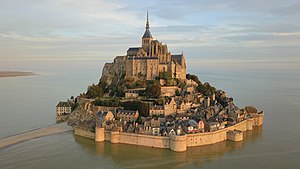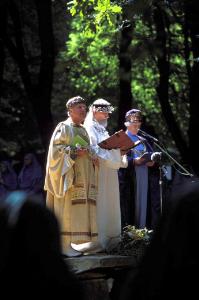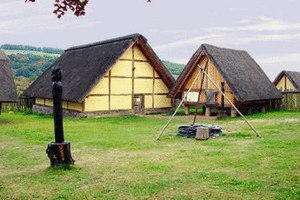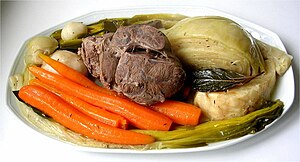Arvorig-Lithau
Dual Monarchy of Arvorig-Lithau | |||||
|---|---|---|---|---|---|
| |||||
| File:Arvorig lithau location.png | |||||
| Capital | Darath | ||||
| Official languages | Jihwan | ||||
| Recognised national languages | Arvorese, Lithavian | ||||
| Recognised regional languages | Audenneis, Cairngwek, Deisega | ||||
| Ethnic groups |
XX% Lithavian XX% Arvorese XX% Audenneis XX% Deisega XX% Cairngwese | ||||
| Religion | Fiadhism | ||||
| Demonym(s) | Arvorese-Lithavian | ||||
| Government | |||||
• Vergobret | XX | ||||
| Area | |||||
• | 139,508 km2 (53,864 sq mi) | ||||
| Population | |||||
• 2022 estimate | 16,330,407 | ||||
• Density | 117.06/km2 (303.2/sq mi) | ||||
| GDP (PPP) | 2021 estimate | ||||
• Total | 圓32,677,144,407 | ||||
• Per capita | 圓2,001 | ||||
| GDP (nominal) | 2021 estimate | ||||
• Total | 圓15,464,895,429 | ||||
• Per capita | 圓947 | ||||
| Time zone | UTC-12 to -11 | ||||
| [Slánu! Consider taking a moment to educate yourself about the real-life Gauls whose culture inspired Arvorig-Lithau]. |
Arvorig-Lithau, officially the Dual Monarchy of Arvorig-Lithau, is a sovereign state and real union consisting of two constituent realms, Arvorig on the mainland of West Yoju and the island of Lithau to its west in the northeastern Mulberry Ocean. Arvorig borders the fellow Gwaelic nations of Bakusai and Talamh Chaonaigh to the north, and Iparmatseta and the Lower Laai Republic to the south, while Lithau shares a land border with the Meisaani overseas territory of Jiugong.
A former colonial protectorate of Jihwa, Arvorig-Lithau gained independence in 1961 and has been plagued by instability since then. Due in part to the effects of the ongoing civil war in Lithau, it remains a least developed country and scores poorly in metrics related to economics, quality of life, and human rights.
Etymology[edit]
"Arvorig" means 'place in front of the sea', derived from proto-Gwaelic Aremorica (are- 'in front of', -mori- 'sea', -ica a suffix indicating a location), describing the country's geographic location on and along the coast. In modern Arvorese 'in front of the sea' is war vor, with the initial consonant dropped as an archaism and the suffix "-ig", likewise indicating a placename, added to form the name of the country. The corresponding term Argoad ('at/before the forest/trees') was once used to described the inland region that is now the Lower Laai Republic while it was still Gwaelic-speaking.
"Lithau" means "land", "earth", or "country", with the connotation of a piece of land surrounded by water indicating Lithau's status as an island. The word derives from the proto-Gwaelic Litauia which itself derives from Litauī, literally 'the broad one', the name of an ancient earth goddess.
History[edit]
Early history[edit]

Old Kingdom of Arvorig[edit]

The petty kingdoms of Arvorig, pressured by Lynian raids and the rise of the Empire of Éicenrad (now Talamh Chaonaigh), first consolidated into a single state in the ninth century and began to shift to a feudal society, while Lithau remained an island of effectively independent tribes, split between three loose overkingdoms and with the occasional appointment of a ceremonial high king.
Two Kingdoms era[edit]

In the fourteenth century, the Arvorese king Waroch the Conqueror gained a claim on the throne of the northern Lithavian overkingdom through a complicated series of dynastic marriages and promptly invaded and conquered it. Over the next three centuries, Arvorig would gradually extend its rule over the rest of the island through conquest, marriage, and diplomacy, with the kings of Arvorig formally securing a permanent hold on the title of High King of Lithau by 1600. However, Arvorig and Lithau remained administratively separate realms, with the former a more consolidated feudal state while the latter was a tense patchwork of ancient Lithavian clans and newly planted Arvorese feudal lordships.
Colonial era[edit]
Sinjuan explorers reached the region in the 1700s. When a mission of Jihwan envoys to Arvorig was executed, Jihwa dispatched a punitive expedition that forced Arvorig to cede Jihwa a treaty port. This became a springboard for a number of Jihwan expeditions over the following century that steadily eroded Arvorese sovereignty, culminating in the death of much of the ruling Warochian dynasty in battle, sparking a succession crisis that Jihwa took advantage of to take over the whole country (except for the southern tip of Lithau which was instead taken over by Meisaan as the territory of Jiugong).
Jihwan rule continued the patchwork political structure, combining areas of direct colonial administration with vassal tribes and fiefdoms, including one ruled by a surviving cadet branch of the Warochians. Jihwa favored ethnic Arvorese over Lithavians and other groups and used them as a relatively more educated and privileged administrative class, perpetuating an unofficial ethnic caste system. It would be this class that began to lead the anti-colonial independence movement in the 1900s. The movement that greatly intensified during Eulhae, when Jihwa itself was occupied and the colonial administration was left rudderless, resulting in a Contingent-backed uprising that was only quashed by Allied intervention.
Independence[edit]
United Kingdom[edit]
Despite that setback, Arvorig-Lithau would eventually be granted independence in 1961 amid the global wave of decolonization, as a monarchy with the Warochians restored to the throne (despite the wishes of many Lithavians who preferred a republic). The absence of an overarching colonial authority exacerbated the patchwork of jurisdictions that made up Arvorig-Lithau and many nationalists seized on this disunity as a cause for the country’s lagging development and instability. They found an ear in King Alan VI, who ascended to the throne in 1973 and began moving forward a plan to merge the entire country into a unitary and centralized jurisdiction. Lithavians saw this as a move to entrench ethnic Arvorese domination over the entire country, as Arvorese already made up a majority of the national administration and economy despite being a minority of the population and the king’s plan would roll back what limited autonomy Lithau had.
Protests ensued, culminating in an open rebellion and the outbreak of the First Lithau War in 1978 that pitted the monarchy against Lithavian separatists and communists. The war lasted until 1985, when Alan VI was overthrown in a palace coup by his sister Janed II, who accepted a peace deal with the moderate rebels to implement a constitution (the first in the country’s history) that made the country a union of two constituent realms and increased the power of parliament, while maintaining some of the monarch’s political power; they then joined together to defeat the communists.
Dual Monarchy[edit]

Though ethnic and regional disparities were lessened slightly, the new government remained disproportionately made up of Arvorese with Lithau continuing to lag behind the mainland in development. The new government also gained a reputation for corruption, and in particular for allowing Sinjuan countries and companies to exploit the country’s natural resources (especially Lithau’s) and erode its culture.
These tensions resulted in the outbreak of the Second Lithau War in 2003. While the initial rebellion seemed to be defeated by 2005, it instead shifted into a long-term insurgency that came to be dominated by the Druidic State of Lithau, religious fundamentalists seeking to establish Lithau as an independent druidic theocracy purged of Arvorese and Sinjuan influence. Much of rural Lithau remains under the control of either these or other insurgents or of the baghaudé, local self-defense militias, contributing significantly to Arvorig-Lithau’s ongoing status as a least-developed country.
Geography[edit]

Administrative divisions[edit]
Arvorig-Lithau is a real union of two co-equal constituent realms, the Kingdom of Arvorig (ᚏᚒᚐᚅᚈᚓᚂᚓᚎ ᚐᚏᚃᚑᚏᚔᚌ, Rouantelezh Arvorig) and the Kingdom of Lithau (ᚁᚏᚑᚔᚏᚔᚊ ᚂᚔᚎᚐᚒ, Brói'rich Lithau).
Climate[edit]
Flora and fauna[edit]
Government[edit]
Politics[edit]
Foreign relations[edit]
Legal system[edit]
Military[edit]
Economy[edit]
Infrastructure[edit]
Science and technology[edit]
Tourism[edit]
Demographics[edit]
Largest cities[edit]

Ethnicity[edit]
Arvorig-Lithau is a binational state made up of two Gwaelic nations, the Arvorese and the Lithavians. Every Arvo-Lithavian citizen is officially classified as either Arvorese or Lithavian on their identification cards and other government documents. This classification is based on ethnolinguistic identity, not place of origin; many Arvorese were born and raised in Lithau and vice versa. The binary identification system dates back to the colonial era, when it was implemented by the Jihwan authorities as a divide and conquer tactic to pit Arvorese and Lithavians against each other, and is blamed for contributing to ethnic tensions ongoing to this day, especially as those classified as Arvorese were often privileged over Lithavians and continue to be socioeconomically advantaged relative to them. Ethnic distinctions also existed prior to the colonial era but were more porous and fluid (a famous example being the "Old Arvorese", the initial wave of Arvorese nobles and gentry to settle in Lithau after the conquest who assimilated to the Lithavian culture to the point of becoming "more Lithavian than the Lithavians themselves"), and many people actually have mixed ancestry. Intermarriage is not uncommon, though it has become rarer as a result of the civil wars, and the children of such unions are usually classified as the ethnicity of their father. Naturalized foreigners are classified under the jurisdiction they were naturalized in.
There are also several other Gwaelic subgroups, the largest of which are the Cairngwek in Arvorig and the Deisega in Lithau, but they are not officially recognized as distinct ethnicities and are instead classified as Arvorese and Lithavian respectively. The largest non-Gwaelic ethnic group are the Audenneis, who are native to Arvorig and thus also classified as an Arvorese subgroup. Around 10% of the population is thought to have some Jihwan or other Sinjuan ancestry or admixture, but the amount of full-blooded Jihwans and Sinjuans living in the country is negligible, with the majority emigrating after independence and most of the remainder departing after the outbreak of the First Lithau War.
Many parts of Arvorig and some parts of Lithau are home to the Cacons, sometimes described as an ethnic group but more accurately described as an endogamous untouchable caste who are mostly indistinguishable from the surrounding populations in language, religion, and appearance but nonetheless intensely discriminated against, segregated from the rest of the population, and only allowed to work as carpenters and butchers. Considered unclean by other people, according to tradition Cacons are not allowed to enter taverns or mills, use public wells or springs, sell or work with food, or walk barefoot in public, and are required to wear duck or goose feet on their clothing and enter temples through a separate entrance, often an intentionally low one that forces them to bow in order to pass. There are many folk and historical theories about the origin of the Cacons but none have widespread acceptance and the reason for their distinctiveness remains a mystery. Discrimination against Cacons was made officially illegal by the constitution of 1985, but in practice this has had little effect outside urban areas and in most rural villages the persecution of Cacons continues unabated. As a result, Cacons tend to be the poorest Arvo-Lithavians and among the likeliest to emigrate. Cacons or equivalent communities are also found in parts of Iparmatseta and Pacheol. No official statistics on the number of Cacons exist but estimates place them at around 15% of the population.
Language[edit]
Jihwan was the official language during the colonial era and was made the official language again in 1985 for the purpose of avoiding favoritism between Arvorese and Lithavian. It is used for government business but it is little used in other contexts, with only limited use in business and media where Arvorese is still more commonly spoken. Only about 20% of the population understands Jihwan and negligibly few speak it as a first language. Some Arvo-Lithavian intelligentsia have proposed switching the official language from Jihwan to the relatively similar Jeongmian to increase Arvorig-Lithau's international competitiveness.
Arvorese (ᚐᚏᚃᚑᚏᚔᚌ, Arvoreg) and Lithavian (ᚂᚔᚎᚐᚒᚊ, Lithauch) are instead recognized by the constitution as national languages, with citizens having the right to access government services in either. Both are members of the Gwaelic branch of the Itihasic language family, with Arvorese being Lowland Gwaelic and Lithavian being Insular Gwaelic, and like other Gwaelic languages are written in the Ogham runic script that originated in Talamh Chaonaigh. Lithavian is more spoken as a first language, but Arvorese is more spoken as a second language (as many people in Lithau speak Arvorese but relatively few people in Arvorig speak Lithavian) and is often considered the de facto official language of the country, after being the de jure official language from 1961 to 1985.
Several minority languages are also recognized, including the Insular Gwaelic language of Deseiga in Lithau, and the Lowland Gwaelic language of Cairngwek and Soranic language of Audenneis in Arvorig. Deseiga is also spoken in Iparmatseta and Cairngwek is also spoken in Bakusai, while Audenneis is closely related to the Frãsé language of the Lower Laai Republic.
Religion[edit]


Like a majority in Talamh Chaonaigh and a large minority in Bakusai, most of the population of Arvorig-Lithau follows Fiadhism, the traditional Gwaelic religion (Lanacháith in Lithavian), also known as Druidism (Drouiziezh in Arvorse, Drúidháith in Lithavian). It is polytheistic; the most widely worshipped deities are the gods Lug or Lúiu, Beli or Velen, Tudazh or Thóthath, Taraniñ or Tharan, and Kornon or Carnun, and the goddesses Itron or Mathron, Brasmar or Roswerth, and Berch'ed or Brianas. It also has elements of animism, revering a wide array of spirits associated with mountains, rivers, trees, and other aspects of the natural world in addition to the gods themselves. Common aspects of religious practice include worship in temples (more common in Arvorig) or sacred groves (more common in Lithau), making votive offerings and burying them or throwing them into bodies of water, seasonal festivals, burial with grave goods, and bardic recitations; human sacrifice and headhunting are no longer practiced except by extremist rebel groups in Lithau.
The eponymous clergy are the druids, who can be either men or women and who organize and lead worship and rituals, especially sacrifices, conduct astronomy and divination, and deliver religious, moral, and philosophical teachings. Historically they were also responsible for administering the judicial system and for advising and mediating between secular rulers. Druidic lore is communicated orally in verse and can take up to two decades to learn fully. Druids were banned during the colonial era, in particular for their perceived role in leading human sacrifice which was considered particularly offensive and barbaric by Sinjuan standards, but druidic lore continued to be passed on clandestinely and revived openly after independence. In the pre-colonial era druids were only loosely organized with little hierarchy beyond the local level; the Royal Druid would be the symbolic leader of all druids of each kingdom but had little practical authority over them. Since independence the government has made repeated efforts to organize the country's druids into a single overarching hierarchy subject to the Royal Druid and monarch as a state religion, but have met with limited success outside urban areas and especially little in Lithau. A number of independent druidic orders with their own hierarchies have also sprung up as new religious movements since independence, the most infamous of which is the Druidic State of Lithau. "Lanacháith" and "Drúidháith" are sometimes used to distinguish traditional unorganized paganism and organized new religious movements respectively.
A minority of the population, particularly concentrated among the urban classes, follows Tathaism as introduced by Jihwans during the colonial era, while a somewhat larger proportion incorporate elements of Tathaism into traditional Gwaelic religion in a syncretic fashion.
Education[edit]
Health[edit]
Culture[edit]
Architecture[edit]

Art[edit]

Clothing[edit]


Cuisine[edit]


The national dish of Arvorig is krampouezh (Arvorese) or crampópith (Lithavian), a type of very thin buckwheat pancake that can be eaten with sweet fillings like fruit or cream, or savory fillings like cheese, mushrooms, or sausage, and is often accompanied with cider. Roadside vendors' stalls selling krampouezh are a common sight throughout the country. The national dish of Lithau is par-gwer-ten ("pot on fire" in Lithavian) or kig ha farz ("meat and stuffing" in Arvorse), a slow-cooked stew of cartilaginous meat, root vegetables, and sometimes buckwheat pudding. Other dishes include kaoteriad, a fish stew, kornigou, antler-shaped cakes eaten in honor of the god of winter on Kalan Goañv,... Pasti is characteristic of the Cairngwese region in the far east of the mainland.
Arvo-Lithavian cuisine is notorious for its large array of cheeses, with each region having its own distinct types (King Alan VI famously said "How can you govern a country which has two hundred and forty-six varieties of cheese?"), many of which are notably strong-smelling even by West Yojuan standards. Other typical ingredients include...
There are several alcoholic beverages traditional to Arvorig-Lithau, which has a high rate of alcohol consumption per capita, include íval, fermented apple cider, lambig, distilled íval, chouchen, mead made from buckwheat honey, as well as beer and grape wine.
Dance[edit]

Holidays[edit]

Like other Gwaelic peoples, the main holidays of the year in Arvorig-Lithau are four seasonal holidays falling roughly half-way between each solstice and equinox. In Arvorig these are Kalan Hañv between the spring equinox and summer solstice, Gouel Lug between the summer solstice and fall equinox, Kalan Goañv between the fall equinox and winter solstice, and Gouel Berch'ed between the winter solstice and spring equinox; the equivalents in Lithau are Belthen, Lúisamwían, Samanthu, and Envolgh respectively.
Literature[edit]
Media[edit]
Music[edit]

Sports[edit]

The national sport of Arvorig-Lithau is the style of folk wrestling known as gouren in Arvorese and amdhelghan in Lithavian, in which barefoot wrestlers attempt to grapple their opponent onto their back on the ground by their shirt or vest. It remains widely popular and many villages have weekly gouren competitions throughout the summer. The most popular spectator sport is cuju.

